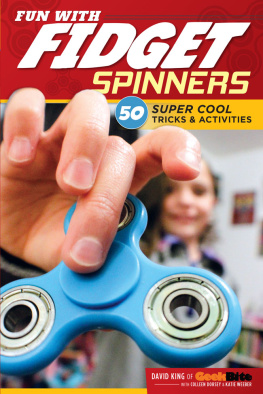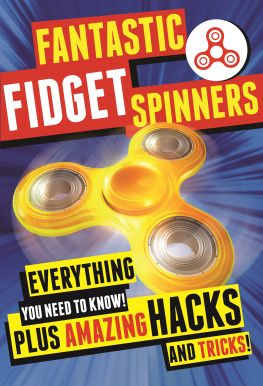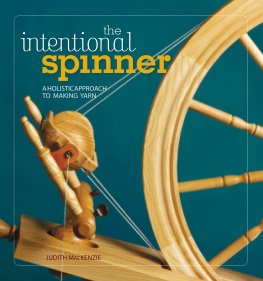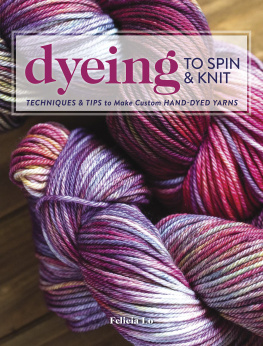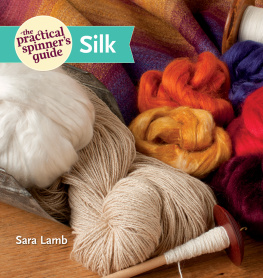
BOBBIE IRWIN

Book design: Dean Howes
Illustrations: Ann Swanson, Marjorie Leggitt, and Interweave Press LLC
Illustrations Marjorie Leggitt and Interweave Press LLC
Text 2001, Bobbie Irwin

| Interweave Press LLC 201 East Fourth Street Loveland, Colorado 80357 USA interweave.com |
Library in Congress Cataloging-in-Publication Data
Irwin, Bobbie.
Spin off magazine presents the Spinners companion / Bobbie Irwin.
p. cm.
ISBN 978-1-883010-79-9 (print)
ISBN 978-1-59668-966-4 (PDF)
ISBN 978-1-62033-227-6 (ePub)
1. Hand spinningHandbooks, manuals, etc. I. Title: Spinners companion. II. Spin-off
(Loveland, Colo.) III. Title.
TT847 .I79 2001
746.12dc21
2001039266
Preface
When I learned to spin during the early 1980s, I found relatively few books to guide me, and I learned through trial and error and by watching other spinners. We new spinners all did things pretty much the samewashed and carded whatever wool we could find, spun it into relatively thick yarns, and knitted it up into very heavy sweaters.
This is the book I wish I had back then, and its just one of the many new resources that todays handspinners enjoy. They also have more prepared fibers to work with, and the skills of the average beginner today are far more advanced than when I was getting started. No matter how much experience you have, though, there are always those tidbits of information you cant recall, and its nice to be able to double-check your techniques now and then.
The Spinners Companion is designed to travel with you and help you solve the little dilemmas that you occasionally encounter. Which direction do I turn the spindle? How do I splice a drive band? Why wont my yarn draw in? Its all in this handy little volume.
As I did the research for this book, I discovered a lot of strong opinions about spinning techniques, equipment, and terminology (often conflicting), and few absolutes. In many cases, there is more than one correct way to accomplish a goal. Ive combined my own experience with sage advice gleaned from old and new sources and have attempted to present information in as concise and factual a format as possible. Nonetheless, you may not agree with everything here, and thats okay. Use this information as a guideline, but temper it with your own experience, preferences, and needs. And enjoy your spinning!
Bobbie Irwin
Table of Contents
Axle: center shaft of the drive wheel
Bobbin: spool which yarn winds onto as it is spun
Brake: on some wheels, a tensioning device that causes the bobbin to turn slower than the flyer, or vice versa, so that the yarn can wind on
Crank: device connected to the axle and footman that turns the axle of the drive wheel
Distaff: optional device that holds fiber for access during spinning (especially flax)
Drive band: cord that connects the drive wheel with the bobbin or flyer whorl
Drive wheel: large wheel that turns the spindle or flyer
Flyer: fork-shaped device that guides yarn onto the bobbin
Footman: vertical bar connecting the treadle and the crank
Maidens: upright parts that hold a bobbin
Mother-of-all: platform that holds the maidens and tensioning devices
Orifice: the hole or tube through which the yarn feeds in
Spindle: a pointed shaft that rotates to twist fiber, or the shaft that holds the bobbin
Table: the platform that supports the drive wheel and mother-of-all
Tension knob: a device that controls the tension of the drive band or brake
Treadle: a foot-operated pedal that turns the drive wheel
Whorl: small grooved disk at the end of the bobbin or spindle around which the drive band or brake band passes
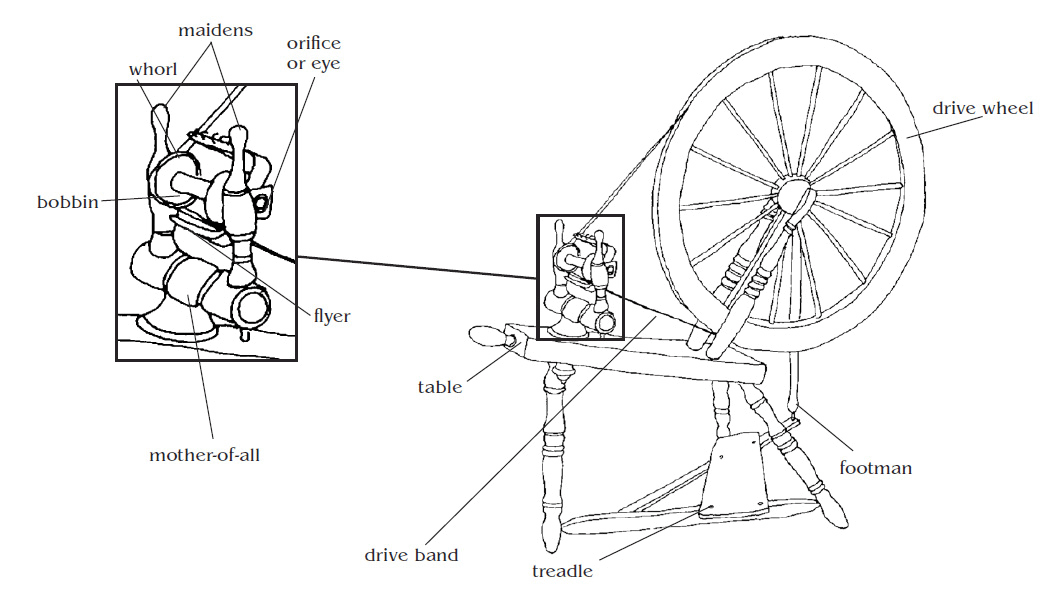
Flyer wheels can be categorized by their mechanical action. The drive band and tensioning system control how the yarn feeds in, and the lead (pronounced leed) dictates how the yarn winds onto the bobbin.
Single-band, flyer-lead (also called Scotch tension): the bobbin has a separate brake that adjusts for faster or slower draw-in. As the spinner releases tension on the spun yarn, the bobbin slows or stops while the flyer continues to rotate, causing the yarn to wind on. This system gives the spinner most direct control, but requires more frequent adjustment.
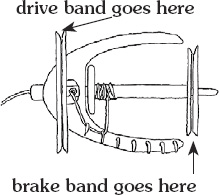
Single-band, bobbin-lead: this wheel has the drive band on the bobbin and a brake on the flyer. As the spinner releases tension on the spun yarn, the flyer stops or slows while the bobbin continues to rotate, winding on the yarn. This is similar to the Scotch tension system, but adjustments are a little easier.
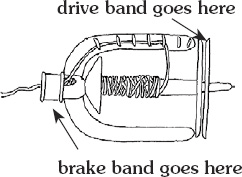
Double-band, bobbin-lead: a drive band loops around the drive wheel twice, one loop turning the bobbin and the other the flyer, both of which turn continuously. The bobbin turns at a faster rate than the flyer, which causes the yarn to wind on when the spinner releases tension on it.
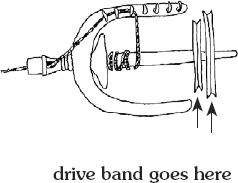
Most modern wheels are suitable for spinning a wide range of yarn types, and some allow one to switch from double-drive to Scotch tension, for example.
Flyer wheels can be categorized by their overall shape and the relative positions of their parts. These are three of the most common:
Saxony-style wheel (see ): the drive wheel is to one side (usually the right) of the flyer, with the treadle below and in between. The term originally referred only to double-band wheels but is now applied to single-band wheels as well.
Upright wheel, or castle wheel: the treadle is directly below the drive wheel and perpendicular to it, and the flyer is above the drive wheel.
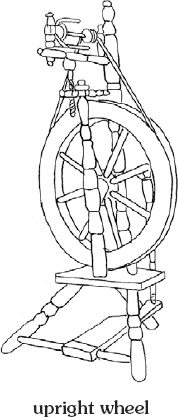
Chair wheel: upright wheel with the drive wheel positioned within a wooden frame.

Single-treadle wheels have a narrow treadle operated by one foot or a wide treadle that can accommodate both feet. Double-treadle wheels have two treadles that move separately (one up when the other is down). To use double treadles or a single treadle with both feet, you must face the wheel. With one foot on a single treadle, you can sit at an angle.
A spindle wheel has a pointed shaft that rotates to twist the fiber; the shaft also stores the spun yarn. Spin off the tip of the spindle, then hold the yarn perpendicular to the spindle to wind it on, rotating in the same direction. Most spindle wheels are turned with one hand while the other hand drafts the fiber, usually using a long draw. Spindle wheels, because of the high ratio of drive-wheel diameter to spindle-point diameter, insert a lot of twist in a hurry.
Next page

